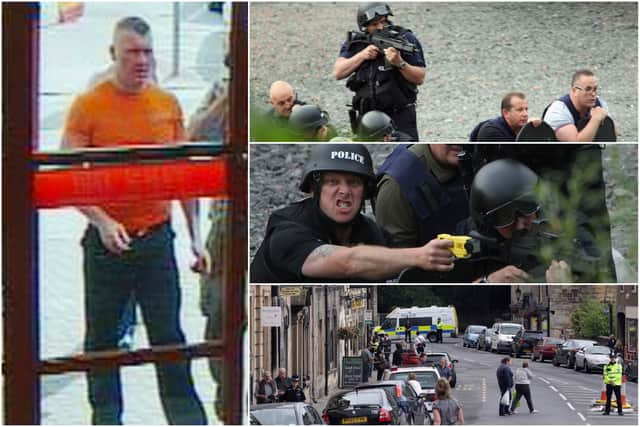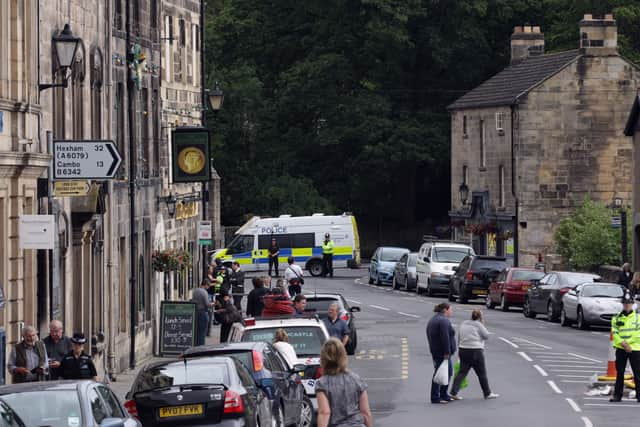Hunt for Raoul Moat: true story behind ITV drama series - and how was Paul ‘Gazza’ Gascoigne involved?
and live on Freeview channel 276
On 3 July 2010, a startling story started to emerge that would grab the nation’s attention for the following week and not let go. Nobody who saw the coverage of Raoul Moat’s crimes in the media - and the extensive manhunt that followed him escaping - will likely ever forget it.
New drama The Hunt for Raoul Moat looks to recreate the infamous manhunt, one of the first high-profile stories to play out in near real-time in the age of rolling news coverage and social media.
Advertisement
Hide AdAdvertisement
Hide AdBut far from just presenting a compelling retelling of true events, the three-part drama also hopes to shine a light on and inform audiences of the plight of violence against women that still runs rife over 12 years later.
“The hunt for Raoul Moat gripped me from the start, as it was the first such case to be covered ‘live’ by the new 24-hour news channels in the UK,” writer Kevin Sampson told PA. “Even then, it interested me that Moat was being portrayed by some as a ‘legend’ in spite of the brutality of his crimes.
“Violence against women remains rife and is all too often accompanied by a victim-blaming agenda. I hope this drama will go some way to condemning this narrative.”
But what is the real story behind the drama? And did an ex-England international footballer really try to lend a hand by turning up with a fishing rod and some chicken? Here is everything you need to know about it.
What happened to Raoul Moat?


Advertisement
Hide AdAdvertisement
Hide AdRaoul Moat gained notoriety in 2010 for a violent rampage in the Northumberland area.
Just two days after being released from Durham prison following an 18-week sentence for assault, 37-year-old panel beater, bouncer and tree surgeon Moat headed to a house in Birtley, Tyne & Wear, to see his ex-girlfriend Samantha Stobbart, the mother of his youngest child.
However, unhappy at seeing her with her new partner, Chris Brown, he began firing the shotgun he’d taken with him - Moat shot and injured his ex-girlfriend and killed her new partner. He then went on the run, and a massive manhunt was launched by Northumbria Police.
Moat was spotted several times over the following days, but though there were several reported sightings of him, he remained at large. PC David Rathband became Moat’s next victim. He was shot and blinded while sitting in a police vehicle near East Denton.
Advertisement
Hide AdAdvertisement
Hide AdHaving developed a hatred of the officers he held responsible for the collapse of his business, he sent letters and made phone calls in which he claimed he had no intention of hurting the public, but would continue to fire on police officers until he himself was dead.
Moat evaded capture for several days, and his image was plastered all over the news and social media. Eventually, he was surrounded by police in a field in Rothbury, Northumberland. After a six-hour standoff, Moat shot himself in the head and died instantly.


News outlets such as the BBC and Sky News provided 24-hour coverage of the manhunt, with live reports from the scene and updates on the latest developments. Some aspects of the coverage were criticised, particularly the use of sensational headlines and graphic images, which some felt were intended to boost ratings or generate clicks rather than inform the public.
The media coverage of the manhunt also played a role in Moat’s perceived hero status, with some newspapers and social media users portraying him fighting back against the authorities, a narrative that appealed to some who felt disillusioned with the government and the police.
Advertisement
Hide AdAdvertisement
Hide AdThere were also concerns about the impact of the coverage on the police operation, with some worried that the constant media attention could interfere with the manhunt or put officers at risk. But the use of social media also enabled members of the public to share information and provide support for those affected by the incident.
How was Gazza involved?
Paul “Gazza” Gascoigne was not directly involved in the Raoul Moat incident, but he did make headlines during the manhunt for Moat.
The former professional footballer and Newcastle United player was a friend of Moat’s, and had reportedly tried to help him during his troubled times. During the manhunt, Gascoigne showed up in Rothbury, where the police were searching, and brought a fishing rod, some chicken and some beer to try to lure Moat out of hiding.
He claimed that he wanted to help Moat surrender peacefully by talking to him about their shared love of fishing.
Advertisement
Hide AdAdvertisement
Hide AdGascoigne’s appearance in Rothbury drew a lot of media attention, and he was criticised by some for potentially interfering with the police operation. However, he was also praised by others for his attempts to help a friend in need.
In the aftermath of the incident, Gascoigne spoke publicly about his struggles with alcoholism and mental health issues - he revealed that he had been drinking heavily during the manhunt and that his behaviour had been influenced by his own struggles - and received support from many in the football community.
When can I watch The Hunt for Raoul Moat?
The Hunt for Raoul Moat airs at 9pm on ITV1 on Sunday 16 April.
Help is on hand for anyone affected by this issue:
- You can call Samaritans for free on 116 123, email them at [email protected], or visit samaritans.org to find your nearest branch.
